A boat has a life of its own. This is the story of one boat whose lineage goes back through Vineyard history; one boat who gracefully carried a Vineyard family as it grew up; one boat that I, a sailor and waterfront reporter, had watched in wonder as she sailed these waters, until she ended up in a field collecting lichens, aging as a home for hornets’ nests.
Then she came to me. This is the story, too, of getting her back into the water, and how the sailors who are the fabric of this community helped me to return this personality to the harbor.
This is the story of Cat’s Meow, an 18-foot Marshall fiberglass catboat.
•
Catboats seem to sail in from another century. Artists, sailors, anglers and especially writers all have a tender spot for these indigenous boats of leisure. They are photogenic even when idle at a mooring at dusk.
A catboat has a signature look, one large sail and a mast far forward. They are beamy; that is, they are quite wide, and have a centerboard that can be raised in shallow water. Nearly all catboats we see in these waters are gaff-rigged, which is to say their sail has four sides.
Island harbors once were filled with catboats. Older waterfront sages readily can rattle off the names of many, their histories, and the captains who have come and gone.
Edgartown’s wooden boatbuilder, the late Manuel Swartz Roberts, known as the Old Sculpin, is credited with building scores of catboats from 1902 to 1947, most of them at his shop which today is the Old Sculpin Gallery. He moved into that building in 1905. A few of his boats are still sailing.
Before the age of diesel and gasoline, catboats were wind-powered workboats, the busy boats of the waterfront. In the late 1800s they were the way anglers got to their fishing grounds in a small boat; Vineyard fishermen sought swordfish in catboats. These were the first boats used for charter fishing.
With the advent of marine engines, catboats got even busier. Some Edgartown owners removed their masts in the late fall and went bay scalloping.
Oscar Pease did just that in his 20-foot catboat, Vanity, well into the 1980s. His boat is this region’s most celebrated and honored catboat. I am old enough to remember Captain Pease for many winters harvesting bay scallops in Cape Pogue. He sailed her plenty and he worked her hard.
Vanity was a party boat, a fishing boat, and a workboat. When he passed onto better fishing grounds in 1995, Oscar Pease’s old boat came into the hands of the Martha’s Vineyard Museum, where she was substantially restored at the Gannon and Benjamin marine railway in Vineyard Haven.
Vanity is regarded by the Catboat Association as the last working catboat, and she was built by the Old Sculpin in Edgartown in 1927. Oscar Pease lived next door to my grandmother, Elsie Lovewell, on South Water street.
Of course I would want a catboat. But isn’t it a commandment? Thou shalt not covet thy neighbor’s boat?
•
My earliest memory of Cat’s Meow is from 1980, when Oak Bluffs celebrated its town centennial. Catboats from all over appeared in the Oak Bluffs harbor for one August weekend. The Catboat Association was founded by a Chilmark summer sailor, and its local members hosted the gathering.
To document this, I sailed with Robert and Judy Bruguiere in their boat, Cat’s Meow, in the sailor’s race in Nantucket Sound. While aboard for the race, I took a signature photograph of the respected wooden catboat Pinkletink as she rounded a buoy. Pinkletink belonged to John Leavens, the founder of the Catboat Association. To this day, Mr. Leavens and his writings remain the catboat lover’s authority on the history of the boat. His wife, Pinkie, died last year at the age of 100. Today, Pinkletink resides on Nantucket.
I’ve known Robert Bruguiere since I was a child. He’s known me since before I was born. We’ve got family stories older than we are. So the Bruguiere family has known for many years of my affection for their catboat.
But catboats these days are expensive, driven up in price by their popularity. Owning one was always beyond my means. For more than 20 years, until last August, I owned a Flying Scot, a speedy 19-foot sloop with a centerboard. I called the boat Assignment. If someone were to ask where the maritime journalist was after he left on a sparkling sunny summer day with his two kids, the answer was simply: “He is out on Assignment.”
Assignment was a fine boat, but sailing her was like riding a crazed horse out of the barn. She wasn’t prone to casually sailing across Edgartown harbor like a catboat. Whenever the wind was up, she wanted to fly. I am too old for flying in a sailboat.
I have memories of Cat’s Meow criss-crossing the Edgartown waters with the Bruguieres. When Robert and Judy were raising the kids, they all spent many summer hours on that little sailboat. As the kids moved into their own harbors, though, Cat’s Meow took to waiting.
For about a decade, until the end of last summer, Cat’s Meow had sat in an open field off the Edgartown-West Tisbury Road, less than a mile from the cornfields of Morning Glory Farm, in the Bruguieres’ backyard.
Then Robert decided it was time to hook her up with a new owner and get her back in the harbor. When he approached me last summer and said he’d decided to sell me his boat, I already knew her plenty. He made an offer I couldn’t refuse.
•
Cat’s Meow was built in 1972 in South Dartmouth. Weeks before acquiring Cat’s Meow last summer, I met the owner of the Marshall Marine Corporation, on Chappaquiddick at a wedding. Geoff Marshall and I got to talking about the boat that his father, Breck Marshall, had built. The Marshall family company was started in 1962 and it has launched 1,600 catboats that now are scattered around this hemisphere, from the Caribbean to Canada. He offered a bit of advice and said he would offer more if needed. It wasn’t the only help I would need, or receive.
On the August weekend I purchased Cat’s Meow, I mailed my application and $20 membership fee to the Catboat Association. A lot of good Islanders belong, and the club’s members are notorious for being overtly friendly. Membership is over 1,400.
In February I attended my first annual meeting of the Catboat Association in Mystic, Conn., and met up with a number of Vineyard catboat owners I already knew: Jim and Kim O’Connor of West Tisbury and Stuart H. and Mary Lollis of Edgartown, and dozens of sailors who visit the Vineyard nearly every summer. I felt right at home.
After the meeting I visited Alan Wilson of Vineyard Haven, the catboat owner and racer who runs Island Tire. The mast of his 22-foot Marshall catboat hangs horizontally overhead in the workshop where he and his crew replace tires.
I spent the month of April restoring Cat’s Meow as she sat at our family homestead in Edgartown during my annual spring vacation.
The benefits of having a “staycation” on Martha’s Vineyard include getting to hang out with friends. Meeting with Mr. Wilson, James Hale, sales manager of Martha’s Vineyard Shipyard, and Bruce Farland, owner of Great Harbor Boatyard Inc., became my social life. Then there was John Harrer, assistant manager of West Marine Express on Beach Road. Paul Cook, Catboat Association treasurer on the mainland, was in regular cell phone contact. One day, I got a ride to my father’s house — and restoration suggestions — from Maury Dore of Edgartown Marine.
They were my vacation friends, and I would need them.
Cat’s Meow hadn’t been in the water for more than a decade. Lichens grew on her deck, and hornets had built nests inside. The wood trim and cabin doors looked like gray, grainy barn wood. The aluminum mast and spars were a deep dark gray. Fortunately, the boat’s sail and cushions were in an ideal state.
Still, it would take at least a month to ready her for the sea.
•
Restoring a 2,500-pound fiberglass sailboat has its complications. There is no shortage of do’s and don’ts. In a short order of reading over the winter, I discovered there would be just as much precision required in maintaining a fiberglass boat as there is in a wooden boat.
I spent days out in the field, sanding, removing tired wood. Under a bright sun I worked, while mallard ducks provided the music of the day. Pinkletinks alerted me to dinner time.
I worked with a pencil behind my ear and a bass and bluefish derby hat over my head, suntan lotion handy. My clothes daily became covered in saw dust, paint chips and epoxy. I often heard a lot I didn’t see. The crows were frequent commentators about how I dressed, a bullfrog and a bobwhite joined in with a tune.
It was not all new to me. My first lesson about the special qualities of the West System epoxy used often by boat builders occurred in 1988, when I met and wrote a story about Richard C. (Dick) Newick. Mr. Newick, then an Island resident, is credited for having built and sailed some of the fastest and lightest world-class trimarans. He made his boats out of an amazing mix, an epoxy resin. His efforts helped to rewrite boat-building techniques. When combined with fiberglass cloth or carbon fiber, that goop made with epoxy can be as strong as steel.
As a photographer who had developed film for more than 40 years, I thought I ought to be able to mix the necessary two ingredients that make the quick-hardening, sticky soup. West System epoxy helped me bring new life to Cat’s Meow.
The work was mainly done alone, and this required some self-imposed rules. First, raise the safety standards a notch and second, lower the expectations for the appearance of the final work (it never looks as good as the way professionals do it).
Oh, and there is a third rule, whether the work is done by a professional or an amateur: be prepared for the work to take longer.
Astronauts working this past weekend on the Hubble telescope 350 miles overhead had the same problem — I heard NASA officials reporting on frozen bolts and a few broken parts that required more effort in their billion-dollar restoration project. It is obvious to me we have something in common. Cat’s Meow was my center of the universe, and the work just got longer.
The peeling paint that decorated the interior walls of the cabin was stripped away. It took at least three days’ effort to get all the paint off, even using an easy marine paint striper. I got help from my Vineyard Haven neighbor, Island Color, in picking a Latex white paint to go inside.
Nancy MacMullen of the Cobbler Shop sold me a nice piece of leather for my gaff rigging.
The bare aluminum mast that came with the boat was strengthened in at least one spot by using epoxy and carbon fiber. All the spars were painted the traditional catboat tan color (Interlux Sundown Buff). The top of the mast was painted white. I followed Mr. Marshall’s recipe for painting the spars, which included wearing a huge, scary respirator over my face while I applied the aluminum cleaner and primer.
Teak is a tropical hardwood often used for the trim of great boats. Properly cared for, teak will outlast most boats and boat owners. But the teak trim on Cat’s Meow needed both reattaching and rejuvenating. The louvered teak doors to the cabin required a lot of elbow work and an electric sander to go from looking like barnyard doors to a cabin doors.
John Thayer, a cabinetmaker in Vineyard Haven, offered me scrap teak for interior work. I learned the great craft of making bungs and installing them.
Choosing a finish was the most difficult decision. Cat’s Meow had never seen a pint of varnish in her 37 years, which is not uncommon. Instead of paint or varnish, many enthusiasts will use natural oil. It is a pretty and low maintenance solution. But this project involved wood restoration, and oil wasn’t enough.
Discussing the merits of various varnishes at a boatyard can be like talking about the Yankees and Red Sox in the major league bleachers. The speaker is always right. The listener is always wrong. And seldom are you told what you want to hear.
For speed and convenience, I chose the easier Sikkens Cetol Marine Natural Teak for outside and Epifanes Rapid Clear varnish for inside. Mr. Thayer reminded me that I might want to spend more of my time sailing than using a sander and a paint brush.
Only slightly less contentious than varnish is the topic of choosing an auxiliary outboard motor. I got my best advice in Newport, R.I., from David Davis. He gave me an earful about what I needed.
Fortunately, in mid-April, Mr. Hale came up with an attractive deal that jibed with Mr. Davis’s advice. A good friend and customer of the shipyard and a good friend of mine, Edo Potter of Chappaquiddick, had just traded in her used small outboard for an even smaller one.
I got her 2008 Yamaha four horsepower, four-stroke outboard.
Spring weather turned out to be the biggest challenge in the project. Rain this week and rain in April have kept me from getting Cat’s Meow in the water in time for this article. A can of red bottom paint is still waiting in my garage, and until the weather is fair, the boat remains high and dry.
Last weekend I got a little further insight on boat restoration work from another friend. Philip P. Hale, president of Martha’s Vineyard Shipyard said it all: “It often takes a village to restore a catboat.”

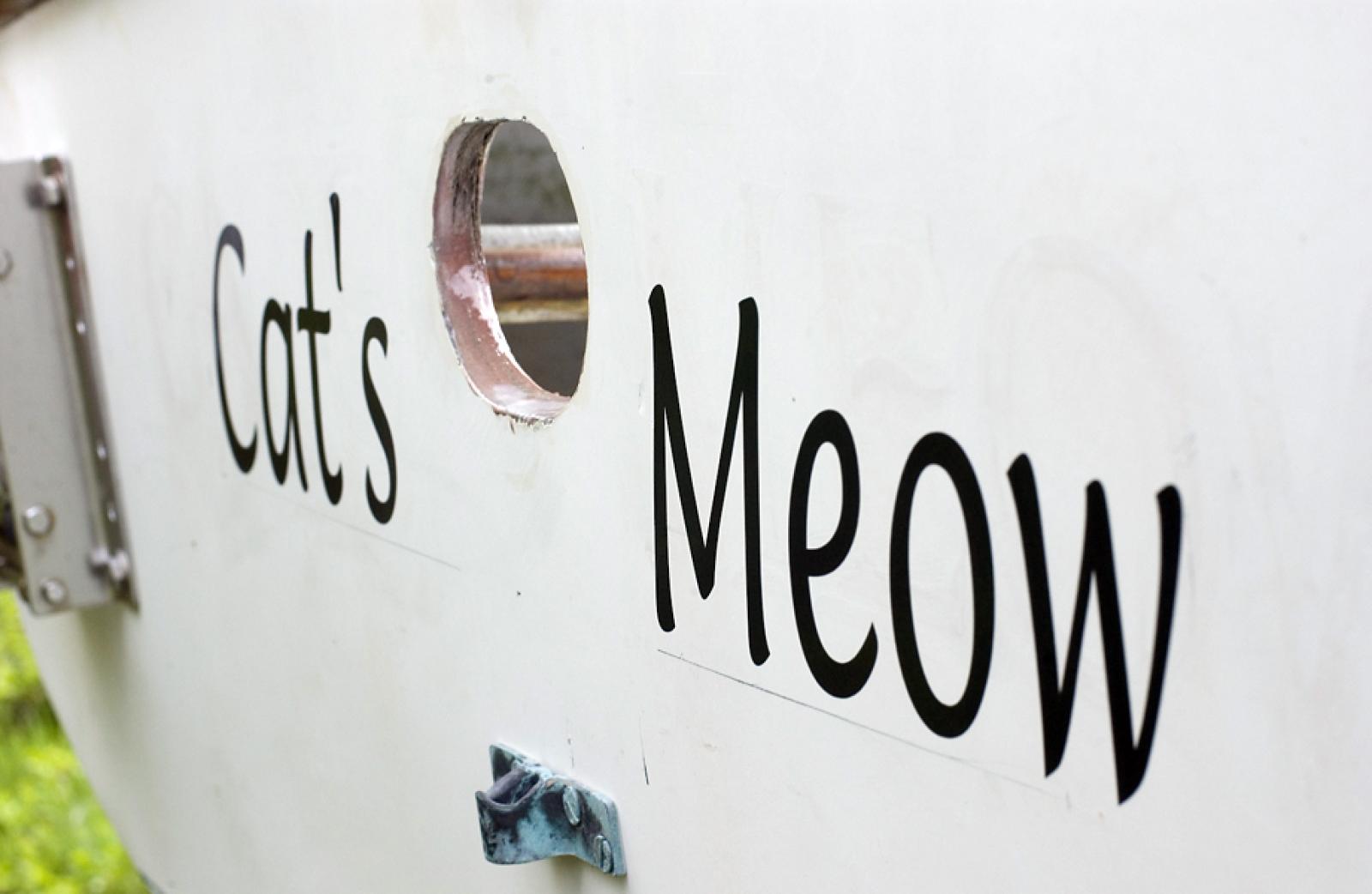
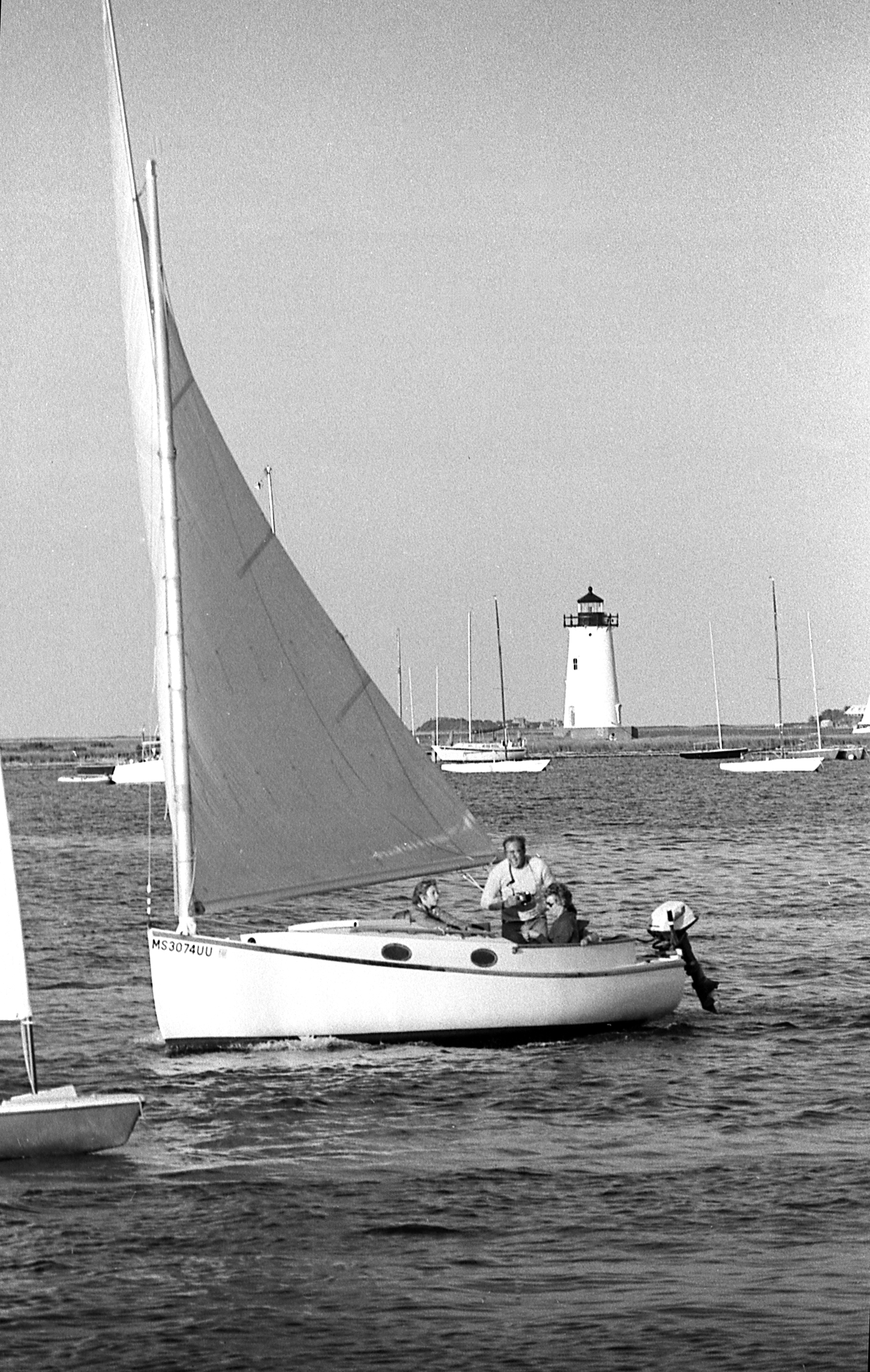
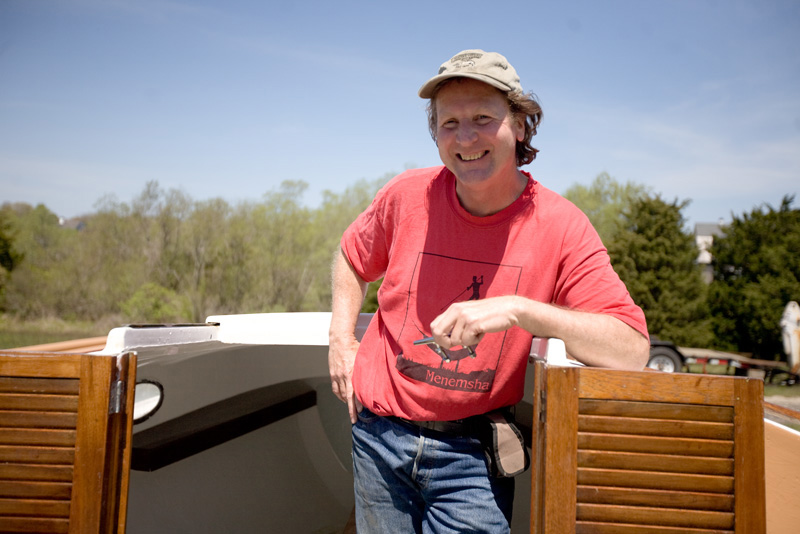

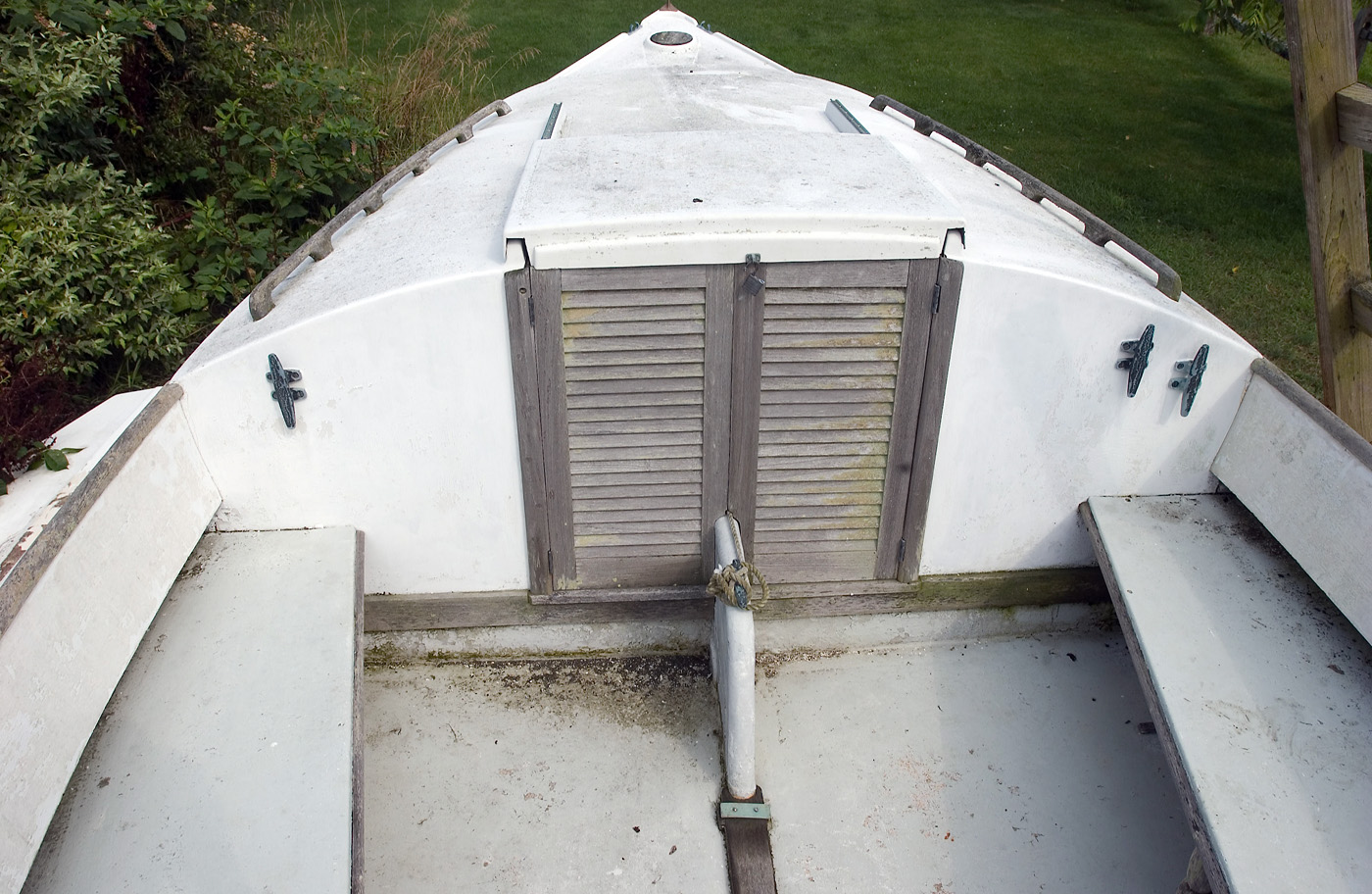
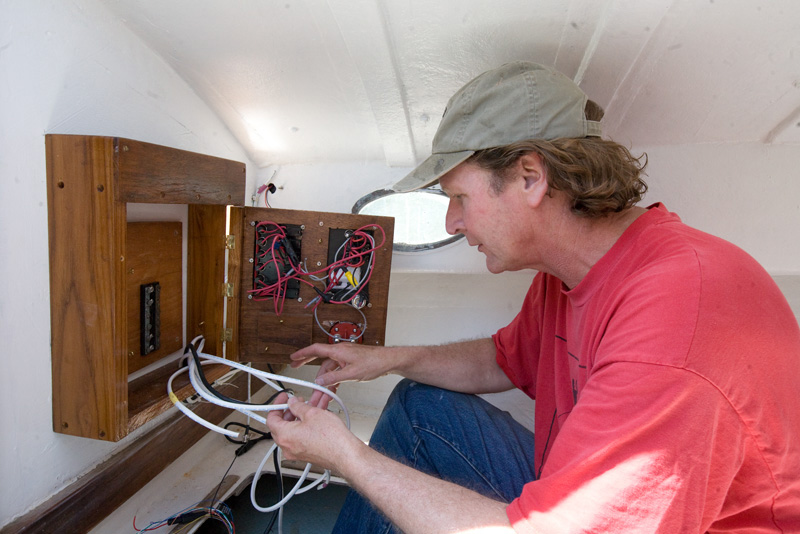
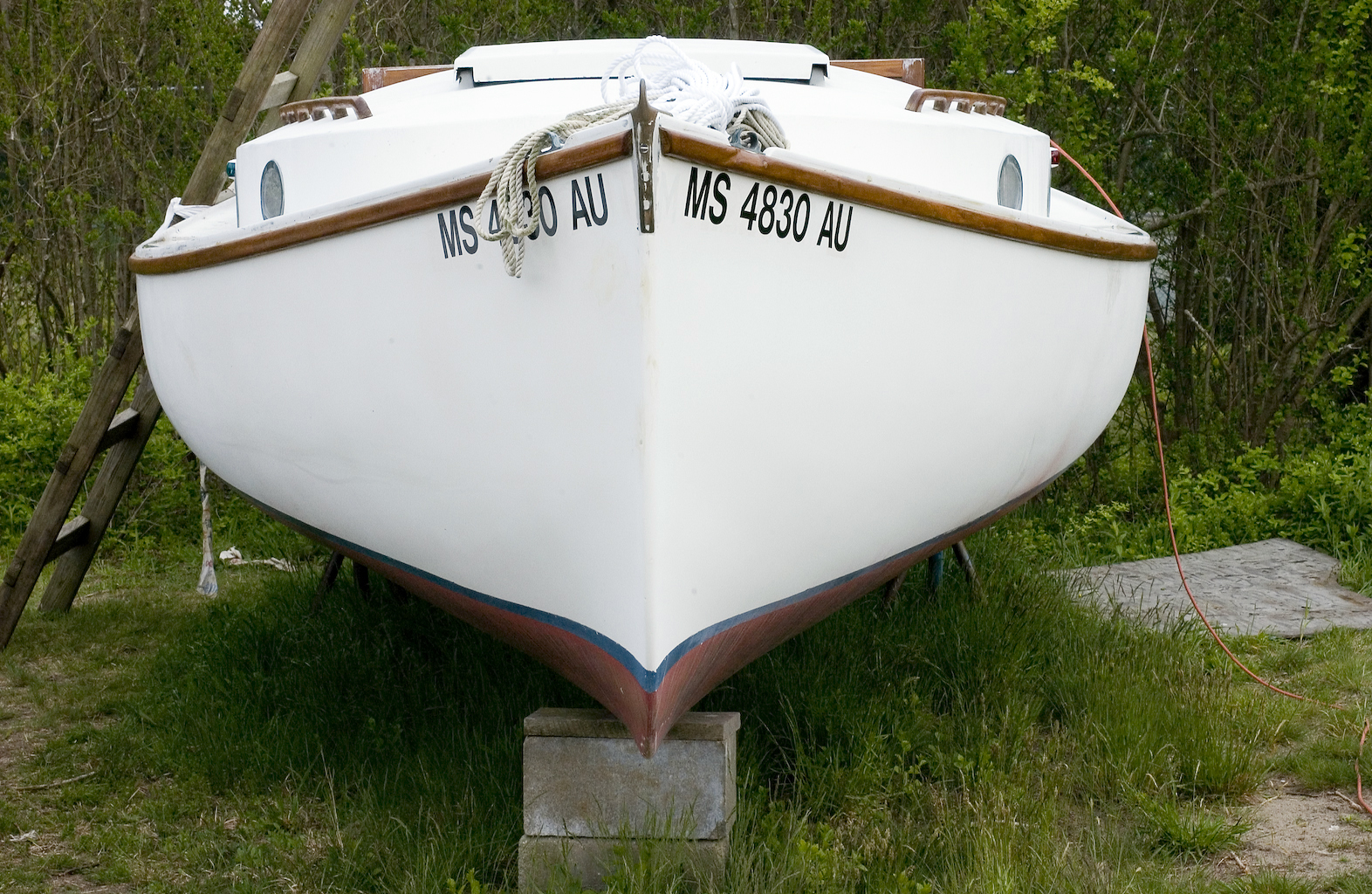
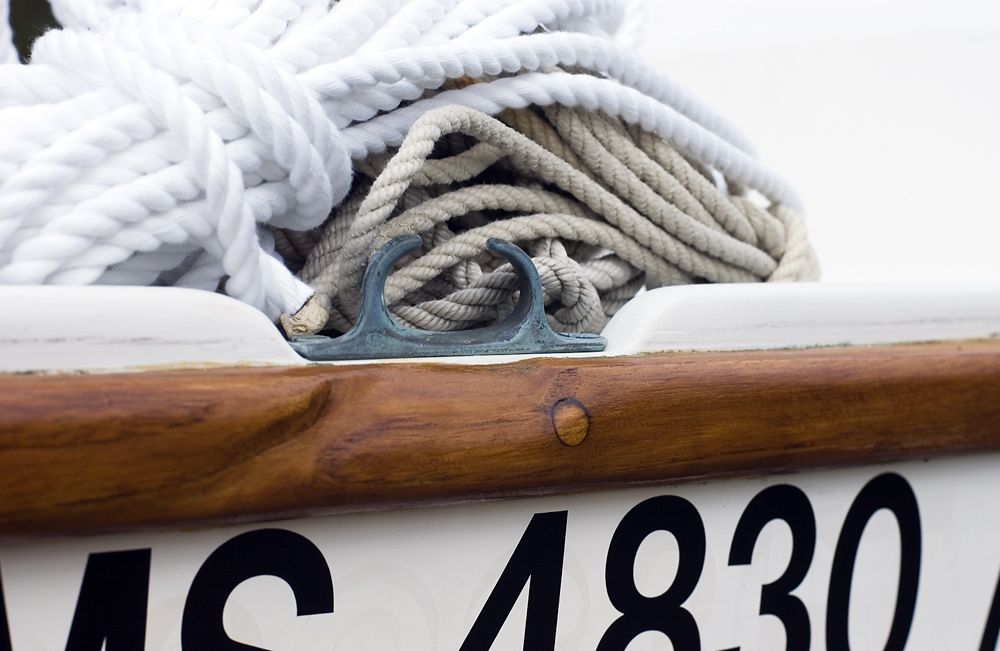





Comments (6)
Comments
Comment policy »